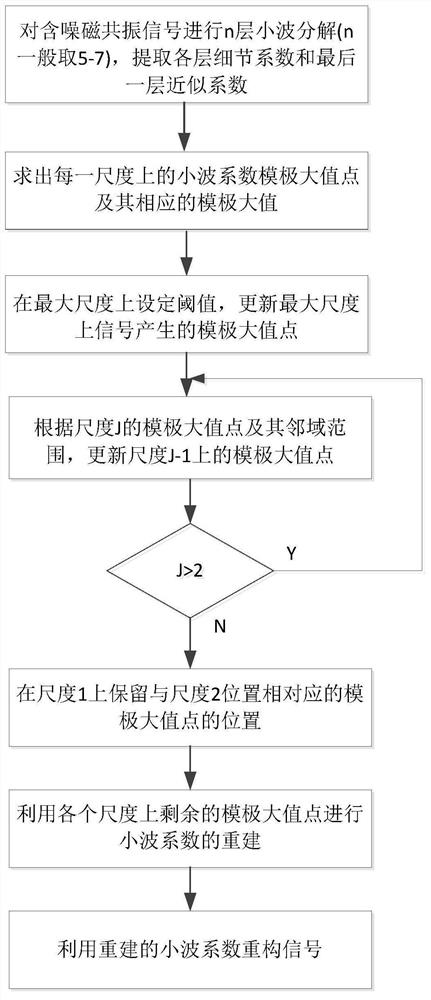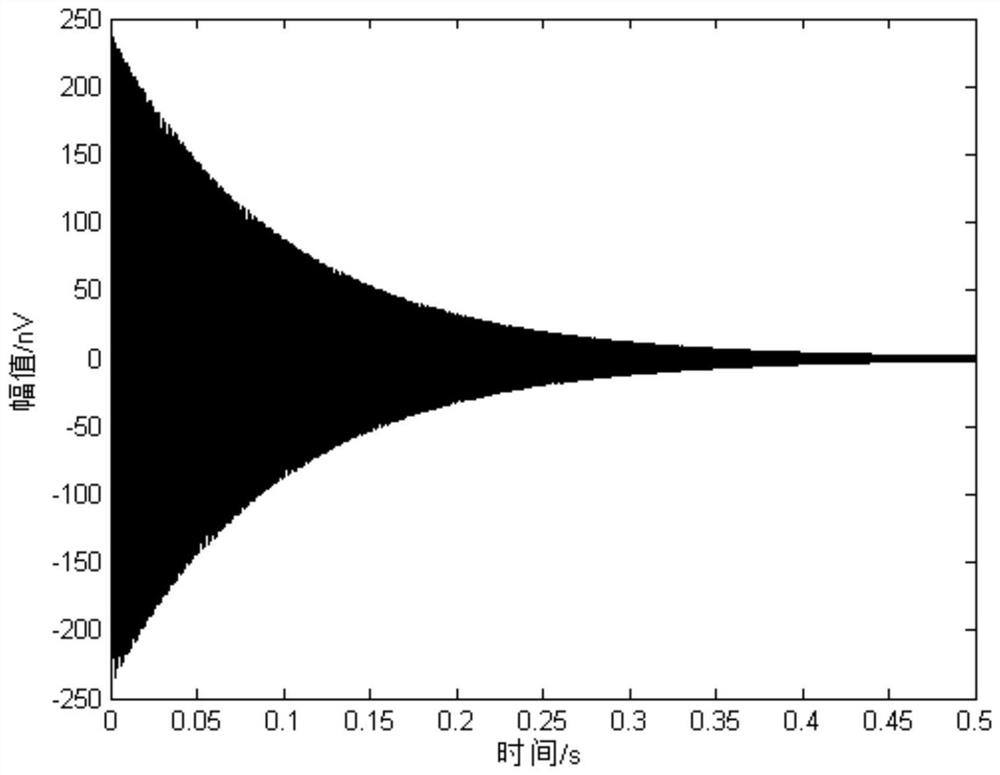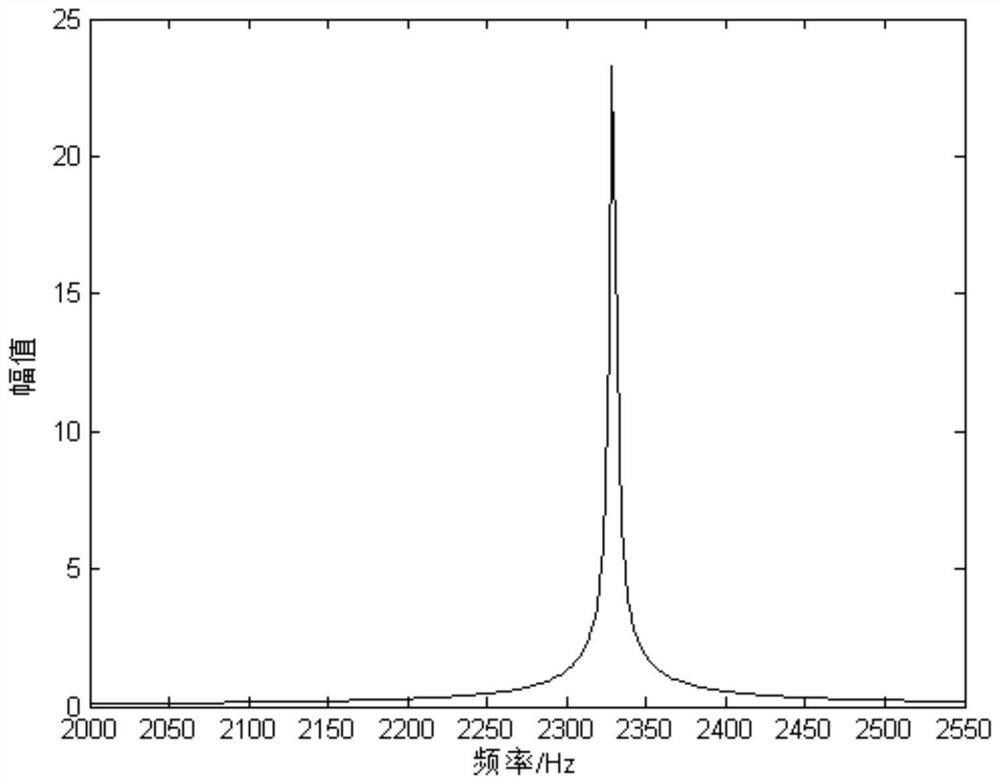A Method for Reducing Power Frequency Noise of Magnetic Resonance Signals Based on Wavelet Transform Modulus Maximum Method
A technology of modulus maximum value and power frequency noise, which is applied in the field of nuclear magnetic resonance sounding signal noise reduction, can solve the problems of cumbersome calculation steps, effective signal loss, and complicated calculation process, and achieve simple process, good noise reduction effect, and reduction The effect of power frequency noise
- Summary
- Abstract
- Description
- Claims
- Application Information
AI Technical Summary
Problems solved by technology
Method used
Image
Examples
Embodiment 1
[0048] This embodiment is a simulation experiment of the method of the present invention carried out under the matlabR2014a programming environment.
[0049] The simulation algorithm of the power frequency noise reduction method for magnetic resonance signals based on wavelet transform, refer to figure 1 , including the following steps:
[0050] a. Add power frequency noise to the ideal magnetic resonance observation signal, construct a full wave magnetic resonance signal containing power frequency noise, and perform 7-layer wavelet decomposition on the noise signal;
[0051] b. Extract the detail coefficient d of each layer 1 ,...,d 7 and the last layer approximation coefficient a 7 ;
[0052] c. Use the wavelet transform modulus maximum value denoising algorithm to update the detail coefficients of each layer;
[0053] d. Reconstructing the signal using the reconstructed wavelet coefficients.
[0054] The specific steps of the wavelet transform modulus maxima denoising...
PUM
 Login to View More
Login to View More Abstract
Description
Claims
Application Information
 Login to View More
Login to View More - R&D
- Intellectual Property
- Life Sciences
- Materials
- Tech Scout
- Unparalleled Data Quality
- Higher Quality Content
- 60% Fewer Hallucinations
Browse by: Latest US Patents, China's latest patents, Technical Efficacy Thesaurus, Application Domain, Technology Topic, Popular Technical Reports.
© 2025 PatSnap. All rights reserved.Legal|Privacy policy|Modern Slavery Act Transparency Statement|Sitemap|About US| Contact US: help@patsnap.com



